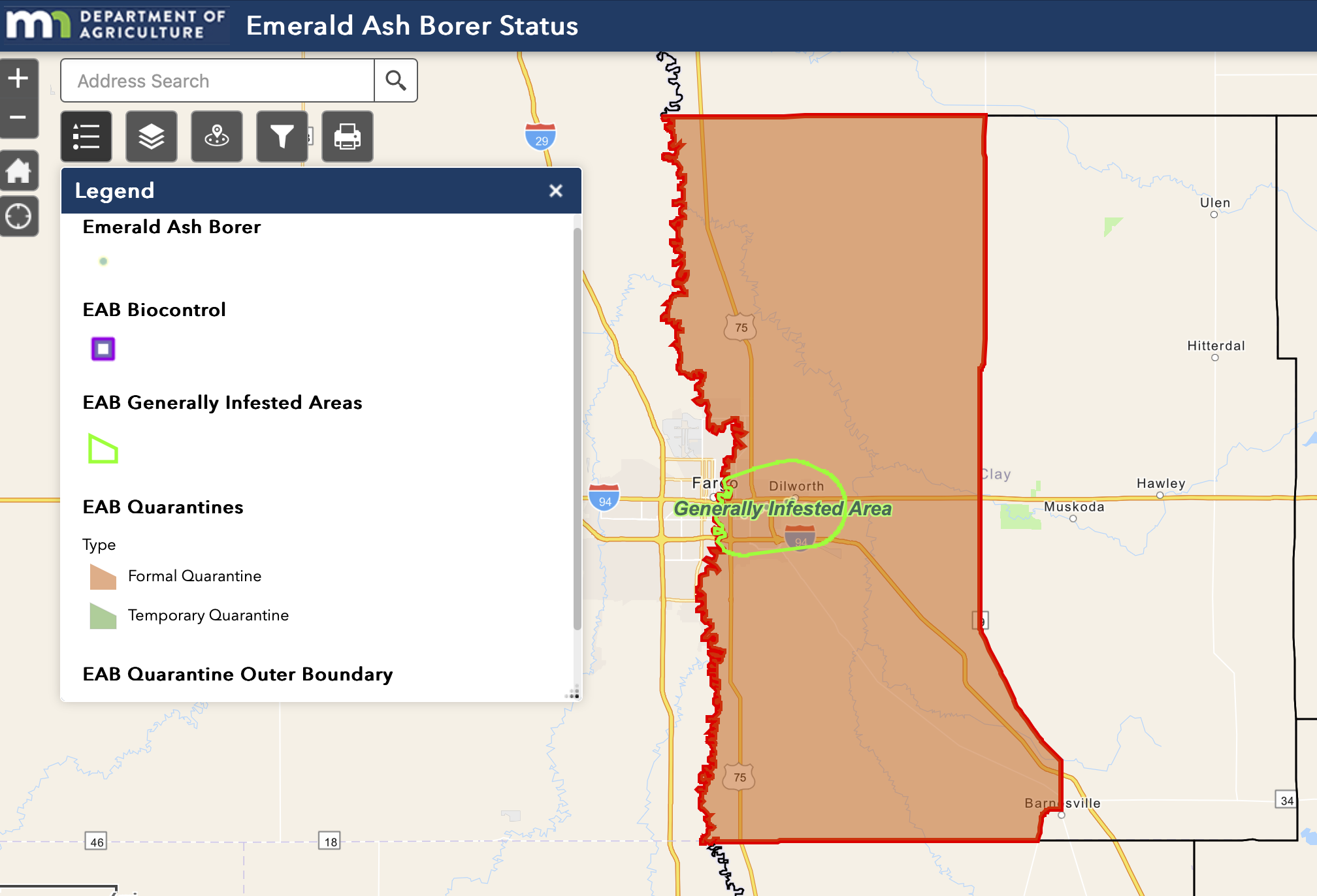MOORHEAD – Concordia College grounds management is entering its second year of preparing campus against Emerald Ash Borers (EABs).
The threat is a green metallic-colored beetle about the size of a grain of rice. EABs burrow into Ash Trees, and if left unchecked, their burrowing will kill the tree.
It can take between 7-12 years for trees to die, but during this period, the beetles can spread their larvae to other trees.
According to the City of Moorhead’s website, larvae from the beetle were found early February of 2023 in Moorhead in the Meadows neighborhood near Clearview Court and Eagle Drive.
Although they have yet to be confirmed on campus trees, campus grounds management has already begun two methods to stop the tiny beetles.
“We definitely didn’t sit on it when we knew there was Emerald Ash Borer in the area,” said Robert King, grounds supervisor.
The first method is simple. It involves sacrificing younger ash trees that could be susceptible to Emerald Ash Borers and could help them spread larvae.
The grounds crew specifically targets the removal of young ash trees in areas like parking lots, where they tend to struggle already.
In February, Concordia facilities removed around 50 ash trees from campus. Mostly, they came from the parking lot at the Mugaas Plant Operation Center and East Complex.
“Removing the trees out of the parking lots was kind of a no-brainer for us, because trees and parking lots generally don’t do great,” said King.
The other method of protection is using an insecticide to poison any EAB larvae that may be burrowing into the tree’s bark. The beetles feed and lay eggs on parts of the tree that move nutrients up and down the trunk.
“It’s a systemic insecticide, meaning it goes through the tree,” said Jerry Raguse, Landscape Horticulturist.
Specifically, a chemical called mectinite is used to kill boring insects.
First, holes are drilled around the base of the tree, then tubes (which are connected to a pressurized container of mectinite) are inserted into the holes and finally the insecticide is pumped into the tree.
This method is effective for two to three years after the initial injection, meaning about a third of ash trees on campus will be routinely receiving the insecticide every year.
The city of Moorhead is in the process of removing younger ash trees that “provide fewer benefits,” and they ask residents to have a plan in place for possible Emerald Ash Borer infestations on their property.
According to the website, “80% of trees can die within years 7-12 of infestation.”
The grounds crew is confident the steps they are taking will be enough to protect the campus trees, and the threat is not overly worrying.
“We don’t have a real heavy infestation in this area,” said Raguse.
However, due to the high number of ash trees on campus, they are taking precautions.
“If we were to lose 90 trees out there that’s a huge impact with shade and aesthetics of the campus,” said King.
Ash trees make up a large portion of trees not just on campus but in the surrounding area as well.
According to Moorhead’s website, “ash trees comprise nearly 26% of the 26,500 trees in Moorhead’s urban forest.”
Due to this and the fast-spreading nature of the beetle, the city’s forestry department has reportedly had a plan in place for combatting the bugs.
The city also advises to limit the movement of firewood out of infected areas.
“That’s the primary way it’s spread, is people moving firewood that’s infested,” said Raguse.

